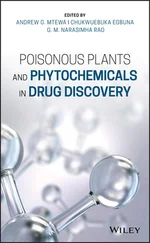Effects:See Toxicodendron species in general.
Measures:See Toxicodendron species in general.
Reference:U.S. Department of Health; Benezra; Roth; Peterson
Toxicodendron Species in General

Toxicodendron spp.
Anacardiaceae family (Sumac family)
Effects:Allergizing through urushiol in the resin of the plants. Through small injuries of the plant the resin can escape in low amounts from the leaf surface and from there get on the skin of a person who touches the leaf. Such small amounts can be already enough to induce an allergy. The allergen penetrates through the unhurt skin into the human body. However, the first contact remains mostly without any reaction. Subsequent contacts with a plant with any parts of the skin can induce rashes which appear right there and at the parts of the skin affected in earlier contacts. 24 to 48 hours after contact, itching, reddening, swelling, and wetting blisters use to appear. Against common opinion the liquid contained in the blisters is not an allergen and can transfer the rashes not to other people. However, this can happen by resin that remained on the skin.
The symptoms reach their climax approximately during the fifth day, then they heal without treatment in 1 to 2 weeks without leaving scars. However, secondary infections are possible if the blisters are not kept sterile. Abscesses or fever may occur then and scars can remain. If the poison gets into the eyes, severe inflammations and temporary or remaining cornea turbidity can follow. The allergy induced by the first contact usually lasts many years.
50% of the Americans react to slight contacts. Only 30% do not react at all. The poison is present in the plants also in winter, and also in dead and decaying plants. Smoke particles of burning parts of the plant spread the poison and can affect the skin and the respiratory tract. The allergen is spread easily, for example by shaking hands or via the fur of straying pets. The urushiol remains active outside the plant during at least 1 year and is not soluble in water. It is soluble in soap solution, though.
Measures:Thorough washing of the skin with water and soap as soon as possible after contact with the plant. If the skin is being washed within few hours this will likely prevent the reaction. Alcohol is unsuitable for cleaning because it accelerates the penetration of the poison into the skin. If no soap is available, the sap of Impatiens plants may also help. Rinsing the skin in flowing water is better than doing nothing at all. Rashes can be alleviated with corticosteroid ointment, while severe reaction needs medical attention. With very sensitive people it may be necessary to prevent allergic reactions with corticosteroids taken orally within 24 hours after contact. If one wants to remove Toxicodendron plants from a garden, they must be dug out with all roots.
Reference:U.S. Department of Health; Benezra; Roth; Peterson
Benezra, Claude; Georges Ducombs; Yves Sell; Jean Foussereau: Plant Contact Dermatitis. Toronto/Philadelphia, 1985.
Behl, P.N.; R.M.Captain: Skin-Irritating and Sensitizing Plants Found in India. New Delhi, 1979.
Dahlgren, B.E.; Paul C. Standley: Edible and Poisonous Plants of the Caribbean Region. US Government Printing Office, Washington DC, 1944.
Du Buisson, Max: Nettles(seminar). Department of Biology, Davidson College, 2001.
Evans, Fred J.; R.J.Schmidt: Plants and Plant Products That Induce Contact Dermatitis. In: Planta Medica, April 1980.
Goldsmith, Norman R.: Dermatitis from Semecarpus anacardium. In: Journal of the American Medical Association (JAMA), Sept. 27, 1943.
Guidelines for Safe Recreational Water Environments. Volume 1, Coastal and Fresh Waters.World Health Organization 2003.
Gunby, Phil: Mucuna Pruriens Associated Pruritis. In: Journal of the American Medical Association (JAMA), Jan. 17, 1986.
Hanewald, Roland: Das Tropenbuch. 3. Aufl. Berlin, 1987.
Jackson, W.P.U.: Plant Dermatitis in the Bahamas. In: British Medical Journal, Aug. 31, 1946.
Keep Away from That Tree, Folks! In: Journal of the American Medical Association (JAMA), Dec. 12, 1980.
Felter, Harvey Wickes; John Uri Lloyd: King's American Dispensatory. 1898.
Kruszelnicki, Karl S.: Great Moments in Science. Stinging Trees. 2003.
Lampe, Kenneth Francis: Common Poisonous and Injurious Plants. US Government Printing Office, Washington DC, 1981.
Lampe, Kenneth Francis; Rune Fagerström: Plant Toxicity and Dermatitis. Baltimore, 1968.
Merrill, Elmer D.: Dermatitis Caused by Various Representatives of the Anacardiaceae in Tropical Countries. In: Journal of the American Medical Association (JAMA), Jan. 22, 1944.
Merrill, Elmer D.: Emergency Food Plants and Poisonous Plants of the Islands of the Pacific. US Government Printing Office, Washington DC, 1943.
Merrill, Elmer D.: Plant Life of the Pacific World. Rutland/Vermont/Tokyo, 1984.
Mitchell, John; Arthur Rook: Botanical Dermatology. 1979, 2001.
Peterson, Lee Allen: A Field Guide to Edible Wild Plants. Boston, 1977.
Poison Ivy Allergy. US Department of Health and Human Services, US Government Printing Office, Washington DC, 1985.
Roth, Lutz; Max Daunderer; Kurt Kormann: Giftplanzen - Pflanzengifte. 3. Aufl. Landsberg/Lech, 1988.
Schoser, Gustav: Tropicarium. Palmengarten Frankfurt/Main, 1987.
Starke Triebwirkung. In: Der Spiegel Nr. 33/1989.
Survival. Field Manual 21-76. Headquarters Department of the Army, 1992.
Whiting, D.A.: Plant Dermatitis in the Southern Transvaal. In: South African Medical Journal, Febr. 13, 1971.
Woods, Brian: Irritant Plants. In: Transactions of the St John's Hospital Dermatological Society, London, 1962.













